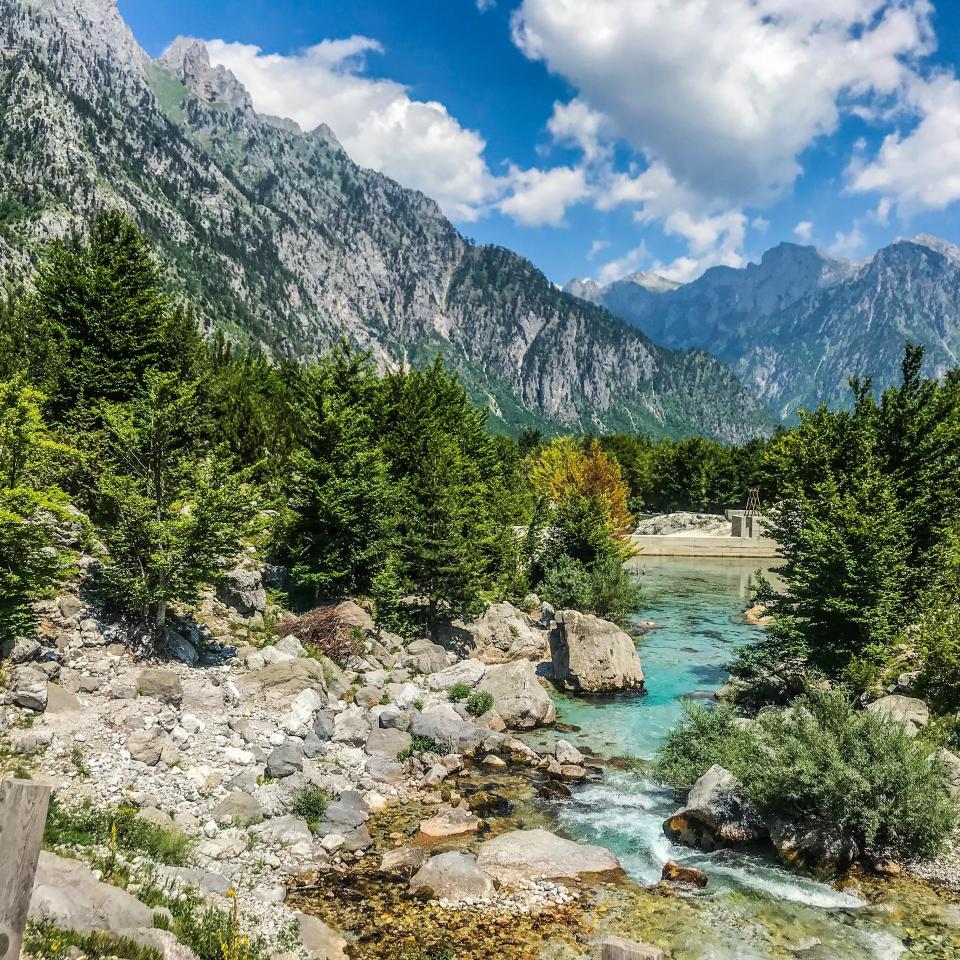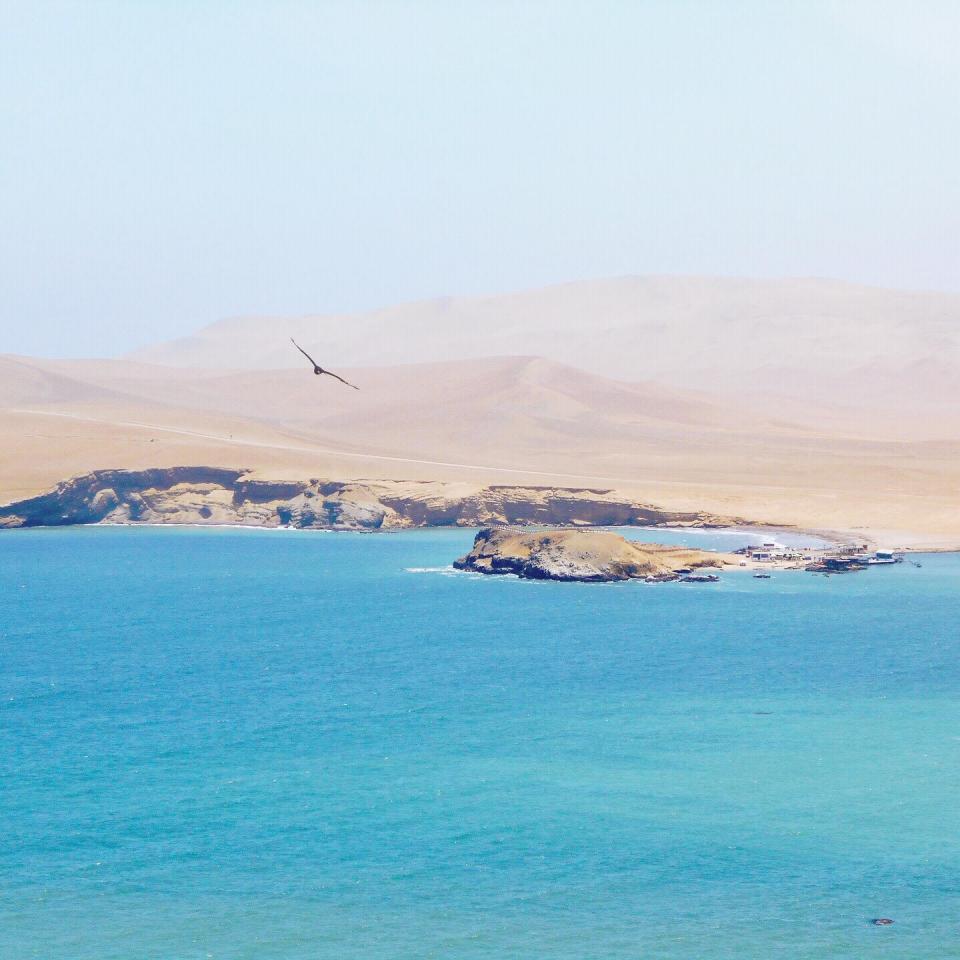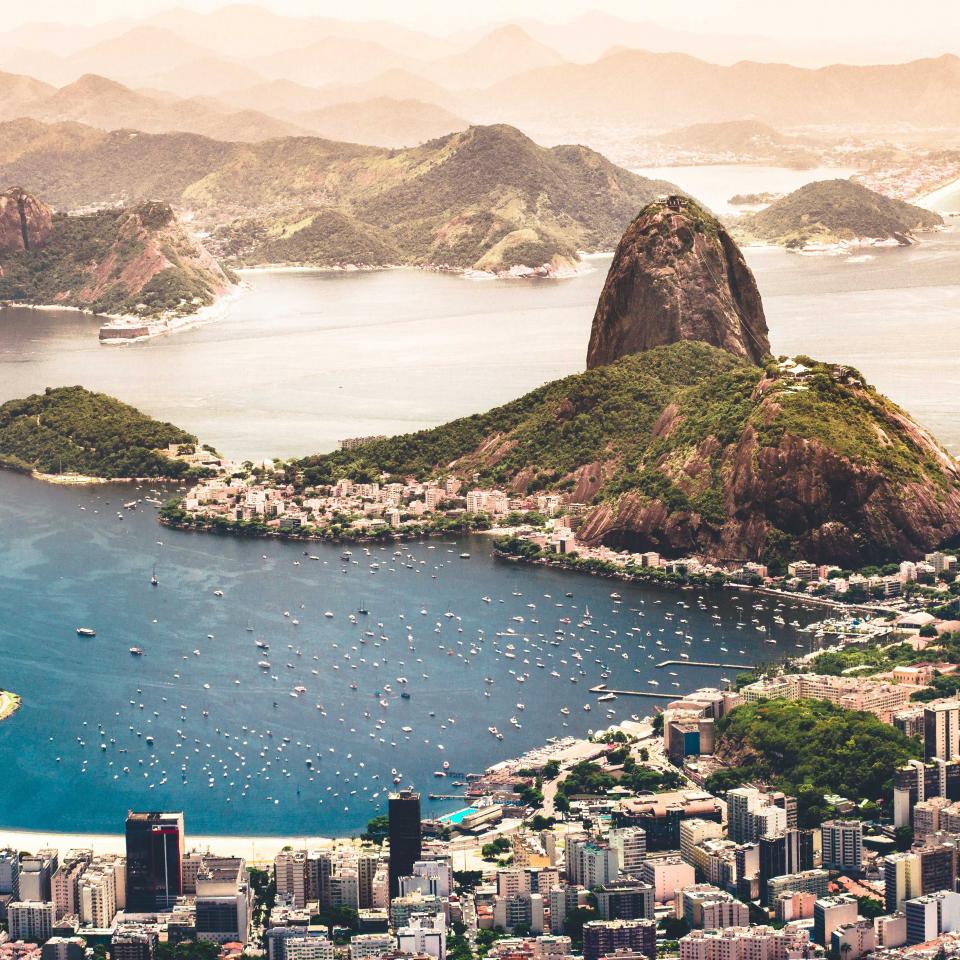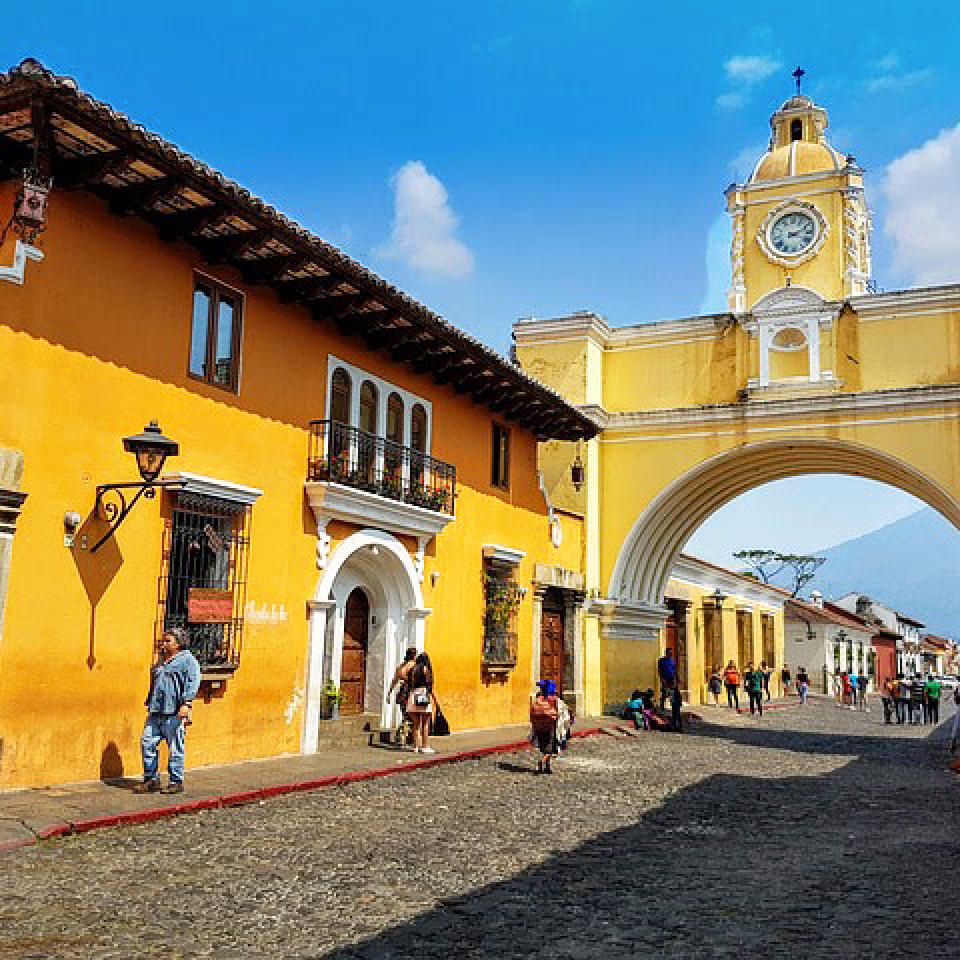As Hemingway put it, Madrid is “the most Spanish of all cities.” As the capital of Spain and one of the cultural centers of the world, Madrid will entrance you with its oh-so alluring and Madrileño (Madridian) ways. It’s something about the condescension of Madrid that makes you love it so much. Lose yourself in the winding and ancient avenues of the city or find yourself sitting at streetside cafe, drinking a cerveza and eating tapas as the sun fades behind the city’s towering buildings. There is something reminiscent about Madrid that draws you in as a foreigner and compels you to stay. The difference between Madrid and every other tourist stop in Spain is its authenticity. It simply is how it is and tries to be nothing more. You will either hate it or love it (but most likely love it).
Bus:
Taking the bus out of Madrid to other cities or countries is the most economic means of transportation. The main bus stations in Madrid is Estación del Sur. To get to Estación del Sur by metro, get off at the Méndez Alvaro stop. There are a few other bus stations such as Avenida de America, Principe Pio, and Moncloa. Check what bus station your ticket says and use the metro to make your way there.
Buying your ticket: Buy your ticket online ahead of time. Go to the Go Euro website or download the GoEuro App. This app shows you all your options by bus, train and plane, allowing you to choose the cheapest and most convenient trip. Print your ticket out before heading to the bus/train/plane station. DOUBLE CHECK what bus station/train station you are departing from, as Madrid has multiple.
Train:
There are two major train stations in Madrid: Atocha and Chamartin. For Atocha, get off the metro at the Atocha Renfe stop. To get to Chamartin, get off at the Chamartin stop. Trains tend to be more expensive, but are a faster and more comfortable option if you have the money to spare. If you are planning on travelling around Europe for a few months and moving from city to city often, it may be worth looking into getting a EuroRail pass.
Flying:
Adolfo Suárez Madrid–Barajas Airport is the only airport in Madrid. It is located on the outskirts of the city, about 13km from the center. To get to or from the airport, the best way is by metro. The metro is located in Terminal 2 on the first floor of the airport. From here it is 45 minutes to the city center. To get to the city center, take line 8 to the Nuevos Ministerios stop. At Nuevos Ministerios, switch to line 10 and get off at Alonso Martinez. At Alonso Martinez, switch to line 2 and get off at Gran Via.
Blah Blah Car:
Blah Blah Car is a carpooling app that has become very popular in Europe. It is often the cheapest form of transportation, though it often requires at least minimal understanding of the language. When using the app in Spain, it is only in Spanish, although the website can be translated. You will also likely be traveling with locals who do not speak much English. If you can speak Spanish, however, Blah Blah Car is a great option for meeting locals and traveling cheap. Download the Blah Blah Car app or go to their website.
Go Travel and Talk Top Tip: When trying to get to the airport, bus stations, or train stations by metro keep in mind that the metro closes at 1:30am and does not open again until 6am. If you are travelling early in the morning, you may want to consider other forms of transportation, such as taking a taxi or an Uber.
Metro:
Traveling by metro in Madrid is by far the easiest form of transportation. When traveling alone for my first time and not knowing Spanish, I managed to easily understand the workings of the Madrid metro system. You will need to buy a Tarjeta Multi or a Tourist Travel Pass. If you are confused as to what you need to buy or where you are going, there are people who work for the metro station nearby the machines that will help you. Keep in mind that the metro closes at 1:30am and opens at 6am.
- Tarjeta Multi: This can be purchased in any metro station from a machine that reads, “Tarjeta Multi Disponible Aquí”. It is a reusable metro pass. It cost €2.50 ($3) to buy the card but it is valid for 10 years. After purchasing your card, you can then load your desired amount of credits. The average, one-way ride costs €1.50 ($2).
- Tourist Travel Pass: This is a great option if you are planning on staying in Madrid for a few days. You can buy a 1, 2, 3, 5, or 7 day pass and you have unlimited use of the metro as well as other forms of public transportation, such as city buses and the Cercanías or commuter trains. This pass can be purchased at any metro station at a machine that reads, “Tarjeta Multi Disponible Aquí”. For more details on where this pass can be used and the cost, click here.
- For details and maps of the metro, click here.
Bus:
Buses run all around the city of Madrid and run all night so are a good choice if the metro doesn’t have a stop near where you are headed, or if you have to get to the airport or bus station early/late at night. There is an airport shuttle that stops at O’Donnell metro station, Plaza de Cibeles and Atocha train station and runs 24/7. For the buses, you can buy a single ticket on the bus for €1.50 ($2) or load your Tarjeta Multi with credits (this is the same red card you purchase for the metro). Tarjeta Multi machines can be found at metro stations. The Tourist Travel Pass also covers certain bus lines. For details on prices, times, maps, and routes click here.
Train:
Cercanías is an inner city commuters train. This can be helpful for getting between stops that the metro does not run directly to, such as getting to and from the Chamartín and Atocha train stations or taking day trips to nearby towns like Aranjuez or El Escorial. Single tickets start at €1.70 ($2) and go up to €38.45 ($44) for multi ride/day tickets.
Taxis/Uber:
Taxis are easy to hail and generally safe in Madrid. Hail a taxi on the street or call an Uber. Taxis are white with a red stripe down the side. Taxis are convenient but tend to be more expensive.
Bicycles:
Bikes are a fun and easy way to explore Madrid in a more leisurely way. Stop by one of the automated bike rental docks by BiciMAD located throughout the city to rent bikes for a few hours. For more details check out the website: Bicimad.
Few places are more quintessentially Spanish than Parque del Buen Retiro on a Saturday afternoon in Spring. Stroll around the park with a cappuccino in hand that you purchased at one of the many open air cafes sprinkled throughout the park, lounge by the lake and watch tourists and locals pedal around on boats (or try your sea legs on one of your own), awe at the glass palace or grab bikes and weave around groups of Spaniards leisurely walking and talking. This massive park gives you a much needed break from the chaos of the city and allows you to experience a characteristic Spanish day of leisure and laughs.
Cost: Free
Getting there: There are a number of entrances into the park. The main entrance is located in Plaza de la Independencia. If you are taking the metro, get off at the Retiro stop and the entrance is right there.
The Museo del Prado is world renown for its collections of Spanish art, a walk through the Prado is a great way to spend the afternoon in Madrid. The Prado holds artwork by Velázquez, El Greco, Rubens, Bosch and Goya among others. Most of the artwork is from the 16th to 12th century. Depending on your taste in art, you can spend the whole day walking through the Prado.
Cost: FREE FOR STUDENTS (if you have a valid student ID). For everyone else, admission is €15 ($17), with a guide book is €24 ($28). There is FREE ADMISSION for everyone from Monday-Saturday 6pm-8pm and Sundays and holidays 5pm -7pm.
Getting there: Get off at the Metro Banco de España stop (red line) or Atocha stop (blue line). From Plaza del Sol, head down Calle de Alcalá until Cibeles Plaza. Here, you will turn down Paseo del Prado which will lead you to the Prado.
If your taste is a bit more modern and abstract, head to the Reina Sofia. Here, pieces by some of the most renowned artists of the twentieth century are held such as Picasso, Salvador Dalí, Joan Mirò and more. You can easily lose a whole day in this psychedelic, time-capsule of art, but if you only have a few hours, make sure to see Guernica by Picasso, Face of the Great Masturbator by Dalí and Man with a Pipe by Miró. Hours: Monday, Wednesday-Saturday 10am-9pm. Tuesday-Closed. Sundays and Holidays vary. Check the Museo Sofia website
for more details.
Cost: General Admission is €10 ($11.50) at the box office, €8.50 ($10) online and €14.50 ($17) with an audio oguide. FREE ADMISSION for students under 25. You must show a student ID.
Getting There: By metro, get off at the Atocha stop (line 1) or Lavapiés stop (line 3).
Go travel and Talk TOP TIP: If you only have one day in Madrid, combine Parque del Bueno Retiro, Mueso del Prado and Mueso Reina Sofia. All three are very close to each other. Start with Mueso del Prado then head to Parque del Bueno Retiro for lunch and a stroll. After lunch, head to the Reina Sofia.
Around an hour before the sun sets, grab a bottle of €5 wine and head to the Temple of Dedod. Here you will find an ancient Egyptian temple dedicated to the goddess Isis. This temple once lived in Egypt, but was dismantled and rebuild in Madrid in 1970. Unfortunately the temple is currently closed, however, the park surrounding the temple is the best place in the city to watch the sunset, as it is located on a hill overlooking Madrid. Sit in the park and sip on some Spanish wine as you watch Madrid become painted with the fading evening light.
Cost: Free
Getting there: From the metro take line 3 to Plaza de España stop or Ventura Rodríguez stations or take line 10 to Plaza de España stop
The most central square in Madrid, Puerta del Sol is the place to head if you want to be in the beating heart of Madrid. This bustling square holds a number of statues, such as the Oso & Madroño (The bear and the strawberry tree), the official symbol of Madrid. Sit back and people watch in the square while munching on some tapas or watch one of the many street performances that always adorn this city center. From here you can easily walk or take the metro (Sol station) to a number of other prominent tourist sights in the city.
If you want to get off the tourist trail a bit and see what a typical Madrileño neighborhood looks like, spend the day exploring Lavapiés. This is the most diverse neighborhood in Madrid with incredible street art. You will experience people from all over the world and the combinations of the cultures they have brought with them.
Head to Calle Argumosa for restaurants and tapas. Here you can find an abundance of international food or join the Tapapiés, or tapas tour, which makes stops in this neighborhood.
For some cultural infusion check out La Tabacalera de Lavapiés, a shared cultural community space where anyone can propose an exhibit. If your in the mood for some shopping, El Rastro, Madrid's oldest street market takes place on Sunday mornings starting at 9am. Here you can find retro clothes, records, art, souvenirs, and more.
Madrid has no less than a million hostels, so when choosing which one to stay at, it can be overwhelming. By far one of the best hostels I have stayed in during my year of traveling was the first hostel I stayed at in Madrid, Sungate One Hostel, located just moments away from Puerta del Sol. This hostel welcomes you in as if you are coming home from a long trip and I guarantee that after one (free) communal dinner, you will have made a whole group of friends from around the world. If you are a lost traveler with few plans and no idea where to go next, this is the hostel for you. If you are a planned traveler who knows exactly what spots you want to see in the city, this is still the hostel for you. Sungate One hostel is great for solo travelers, as it promotes a communal atmosphere, offering free communal dinners and bar crawls every night. As for day activities, they will tell you exactly where to go and how to get there. Budget around €19 ($22) for a 6 bed dorm, per night.
Mercado de San Miguel: Head to one of the oldest open-air markets in Madrid and tapear (the act of eating tapas) your way through, trying all the flavors of the finest Spanish cuisine along the way. From fresh fish, cheeses, breads and of course, jamon, the Mercado de San Miguel will give your a taste of everything that is Spain. Don’t forget to grab a Cerveza, or a cider straight from the Basque country to wash down your tapas! Check out Devour Madrid for more information.
J & J Books and Coffee: If you are a book nerd like me you will understand the desperation that occurs when you can’t find a good book (let alone any book in English). Head to J & J’s to grab a used English book and a glass of wine or cafe con leche. This is a great spot to meet other English speaking travelers and grabs some drinks in this down to earth, book-nook or just spend the day tucked away in a cozy corner reading your new found English book. The closest metro station is the Noviciado, on the red line.
El Tigre: This is the ultimate spot for a budget backpacker who wants to experience real Spanish tapas (featured in Like a Local). Tapas are actually free here! For every drink you buy, you get a hearty tapa to go alongside and a beer is only €3 ($3.50). There are a number of El Tigres located throughout the city. To find a centrally located one, head to the Gran Via metro station. Head down Gran Vía towards Parque del Buen Retiro. Turn on Calle del Clavel and then take a right on Calle de Las Infantes.
Local Food:
- Don’t forget to try churros y chocolate and bocadillo de calamares. Bocadillo de calamares is a simple calamari sandwich and is one of Madrid's most well known dishes. Go to Plaza Mayor to find the best Bocadillo de calamares in the city. Churros y chocolate is fried dough dipped in hot, liquid chocolate. You can find these everywhere in the city but for the best go to San Ginés who has been making them for over 100 years.
Vegetarian/Vegan Food:
- Madrid has a bit of everything so it isn’t hard to find some veggie bites in this city. Check out Vega for some delicious, hearty vegan food or Reineta Vegetariano for some vegetarian food that even your non-veggie friends will love!
Madrid is the real city that never sleeps and one of the best places in the world to go out. As Hemingway wrote, “Nobody goes to bed in Madrid until they have killed the night.” So don’t miss out on this facet of the real Madrileño experience.
Barrios de Malasaña: One of the trendiest neighborhoods in Madrid, head here to grab some drinks, tapas, and to have one of Madrid’s notorious nights on the town. Grab some beers and walk through the bar laden streets listening to find the best joint, as Malasaña is known for good bars and good music. Check out Tupperware, a funky bar known for its chill vibes and good music. Furthermore, this neighborhood is not just limited to nighttime adventures, it's littered with graffiti and restaurants so don’t miss out on this funky, hipster neighborhood has to offer by only going at night.
Chupito Sabor: If you want to drink where the locals drink, check out this Chupito Sabor, an eccentric little joint that describes itself as, “A small neotiki temple of surprising combinations.” How could you go wrong with a description like that? Find any shooter your heart desires starting at €1. There are two locations: one is in the Alonzo Martinez metro station and the other in the Barrio Húmedo, next to the Plaza Mayor.
Ocho y Medio: For some good live music and dancing, check out Ocho y Medio. With concerts or a DJ almost every night playing indie, rock, electronic and pop this place will give you a great taste of Madrid’s music scene. Check out their website to see who is playing when you are in town.
Serve the City is a fantastic organisation that organises and facilitates volunteer projects to help the "underpriviledge in our society". They actively seek and communicate with local humanitarian projects and organisations as well as offering help to those in need, with multiple opportunities for you to get involved in.
Serve the City also have a specifically designed program for those looking to make a positive impact through travel, called "Vountourism". The organisation invites volunteers to stay in pre-arranged accommodation with meals provided and help with ongoing placements, usually running Monday-Friday, for 3-5 hours per day. Please check out their website for more information and prices.
Bokatas is an incredible voluntary organisation and direct action project, who are dedicated to fighting homelessness. Not only do they provide nutrition by handing out sandwiches and coffee, but they use it as a means to start a conversation and "dignify the situation of the homeless". Bokatas also work tirelessly to bridge the gap between homelessness and social institutions, collaborating with several working groups and entities to spread their message.
To volunteer with Bokatas, all you have to do is give an average of 3 hours of your time a week, to go out and speak to the homeless, sharing stories and offering a much needed ear. You can sign up and find more details on their website.





